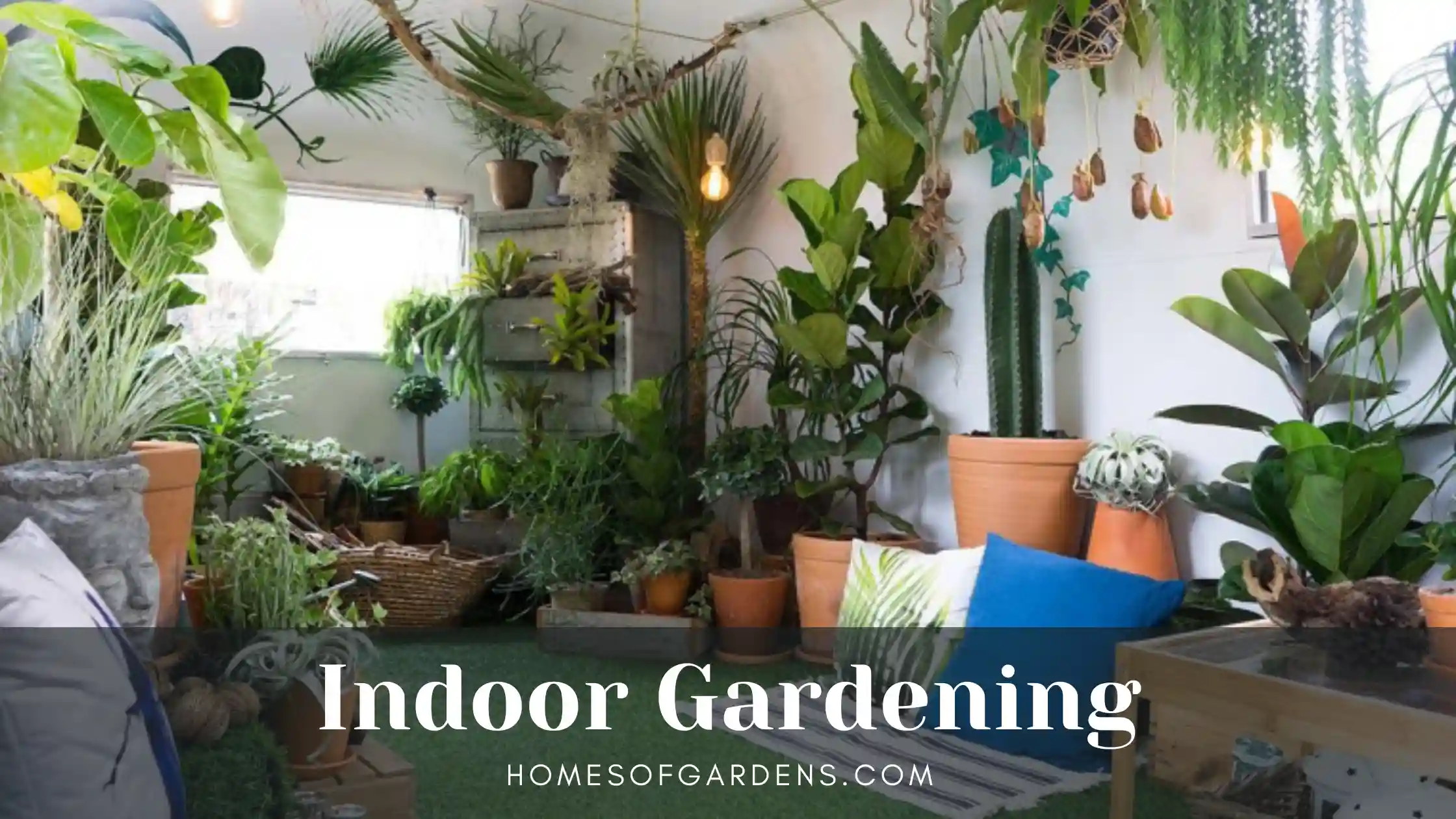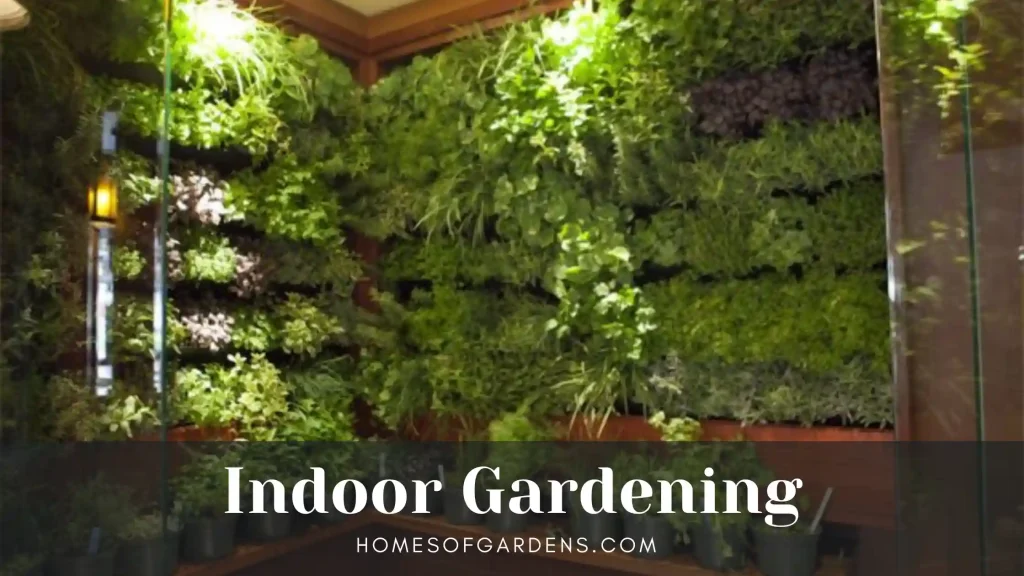Physical Address
304 North Cardinal St.
Dorchester Center, MA 02124
Physical Address
304 North Cardinal St.
Dorchester Center, MA 02124

Inviting nature into your home does more than simply beautify the living area. Gardening indoors connects you to your food and purifies the air that you breathe and gives you a relaxing break from the everyday grind. If you live in a large home or a small apartment it is possible to create an impressive garden within your own home. This guide will take you through all the information you need to know about gardening, starting with choosing the best plants and lighting to examining new techniques like hydroponics.
Learn how to begin with the basics of installation, and discover new indoor gardening concepts and discover solutions for the most common problems. We’ll cover the basics for soil care, irrigation and feeding, so that your indoor garden flourishes. For those who want to increase their abilities, we’ll go into the realm of indoor herb gardening and the soil-free benefits in hydroponic systems. Let’s grow together.
The path to indoor gardening starts with knowing the essential requirements of plants such as light, water and nutrients. As opposed to outdoor plants where you are in control of these elements entirely. This allows you to have a tremendous amount of potential, but also comes with responsibilities. The path to success is built on a solid base.
The location you will place your plants is the primary choice. Many people believe that a windowsill is the only choice but this isn’t always the situation.
Don’t limit your indoor gardening plans to windowsills. Baskets, shelves and specialized plant stands are a great way to transform the corners of the room into a lush green area, particularly when paired with artificial lighting.
Starting an indoor garden doesn’t require a huge investment. Here are the most important things you’ll need to start your journey.
When you have your plant and equipment prepared now comes the actual work. Learning the fundamentals of water, light and nutrients will prepare you to be successful over time.
Light is a source of nutrition for plants. If they don’t have enough light they are unable to photosynthesise and grow or flourish. If your home isn’t lit with sunlight that is bright and natural You must add artificial lighting.
Natural light is wonderful, however it’s also inconsistent. It changes according to the season as well as the weather and the time of the day. Grow lights offer uniform, full spectrum light that you control.
If you are using grow lights, you need a timer to be your best companion. The majority of edible plants require 12-16 hours of lighting each day, whereas houseplants will be content by 8-10 hours. A timer can automate this process to give your plants the stability they require.
The two most common mistakes are drowning and overwatering. two biggest mistakes that gardeners who are new make. The aim is keeping the soil damp, but not waterlogged.
How often you water is contingent on the kind of plant and size of the pot, as well as temperature and humidity. A tiny terracotta pot in a dry, sunny space will require water more often than a huge ceramic pot that is placed in a dimly lit humid bathroom.
Potting mixes provide the initial nutrients, however these are exhausted in time. To ensure that your plants are healthy, it is essential to replenish these nutrients by using fertilizer.
Once you’re confident with the basic concepts, you can begin to explore more advanced varieties in indoor gardens. Each has its own rewards and obstacles.
Imagine cutting fresh basil to use in your pasta or mint to make your tea directly in your kitchen. An indoor herb garden is both practical and beautiful. Many plants thrive indoors when there is enough sunlight.
For successful indoor herb gardening, light is paramount. A south-facing, sunny window is the ideal. If you do not have one, an easy growing light with LEDs is an absolute must, especially for plants that require light, such as basil. You can harvest your herbs frequently by cutting off the leaves that are on top. This helps the plant grow larger and more productive.
Hydroponic gardening is the process of cultivating plants with no soil. Instead the roots are sunk in a rich nutrient water solution. This method can result in greater yields and faster growth within a smaller area.
Beginning with hydroponic gardening indoors may be daunting However, many kits that are all-in-one are available to simplify the process for novices. They contain everything you require, which includes an entire system of nutrients and occasionally seeds.
Even experienced gardeners face problems. Here are some common issues and how to troubleshoot them.
Q: How much light do indoor plants need?
A: Most plants need at least 6-8 hours of bright, indirect light, while fruiting plants and herbs often need 12+ hours, which may require a grow light.
Q: Can I use regular soil from my yard?
A: No, outdoor soil is too dense for pots and can contain pests; always use a sterile, well-draining indoor potting mix.
Q: What is the easiest plant to grow indoors?
A: The snake plant (Sansevieria) is incredibly resilient and tolerates low light and infrequent watering, making it perfect for beginners.
Q: How often should I fertilize my indoor plants?
A: Generally, you should fertilize every 4-6 weeks during the growing season (spring/summer) and reduce or stop in the fall and winter.
Q: Is hydroponic gardening difficult for a beginner?
A: It can be very simple with an all-in-one beginner kit, which provides everything you need to get started easily.

The indoor garden is a fulfilling activity that improves your house and well-being. If you are aware of the fundamentals of water, light and nutrition, you are able to make your indoor space into a flourishing garden. Start with a small selection of easy-care plants and don’t be afraid to try something new. It doesn’t matter if you want to make an abundance of plants for your home or a gardening space indoors, or a sophisticated hydroponics setup, the fundamentals are the same.
Learn about your plants, observe the needs of your plants, and then enjoy the process. Each new leaf is a little victory. The bond you form through your plant life will give you peace and satisfaction to your day. Therefore, choose one, put it in the right container, and start your gardening adventures indoors now. Your home will be more green and your life will be more fulfilling thanks to it.